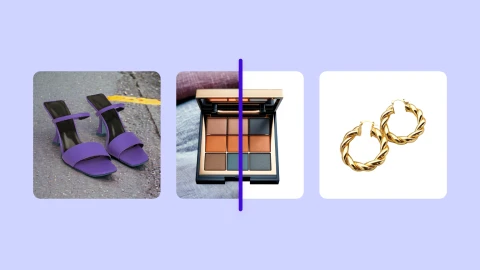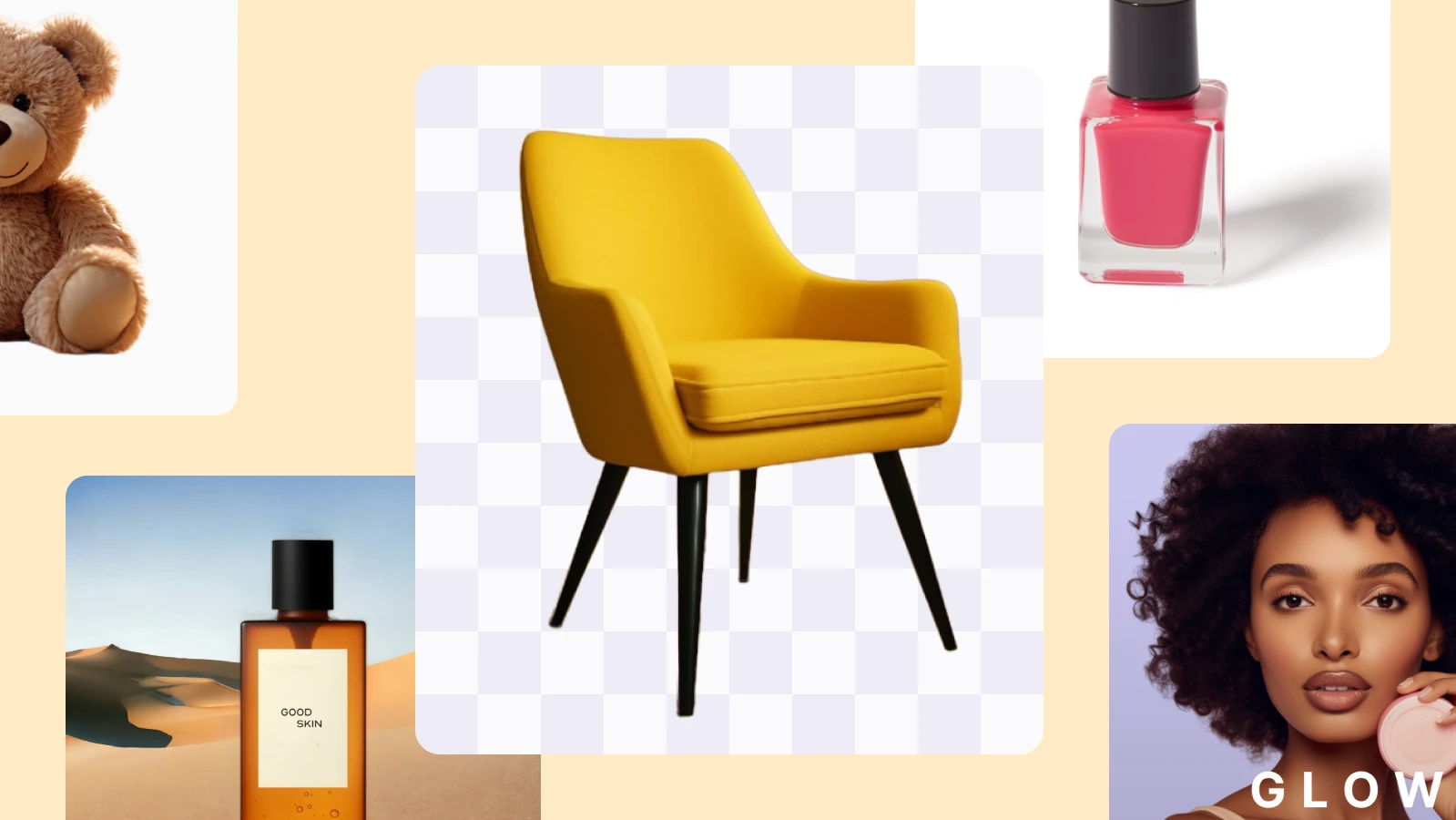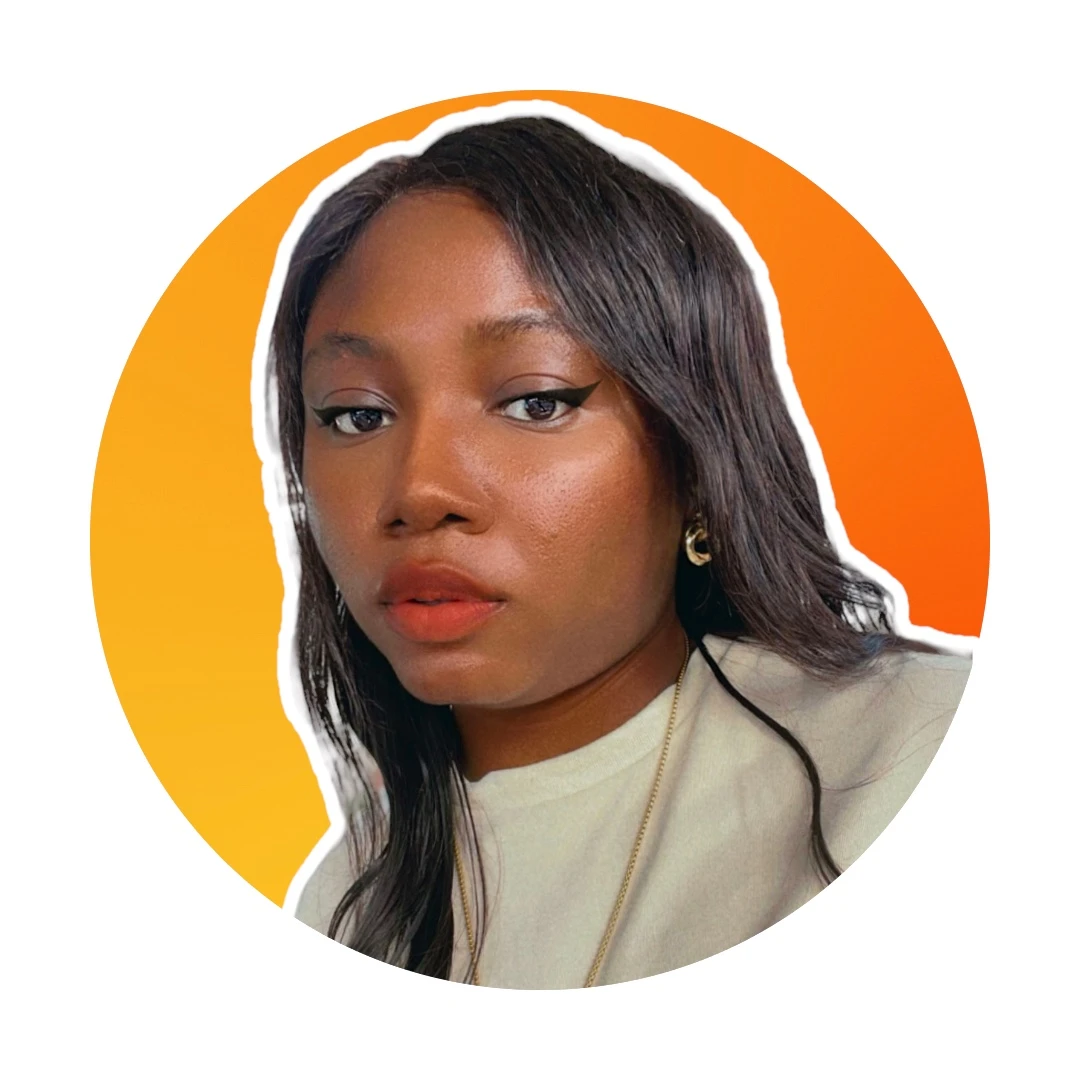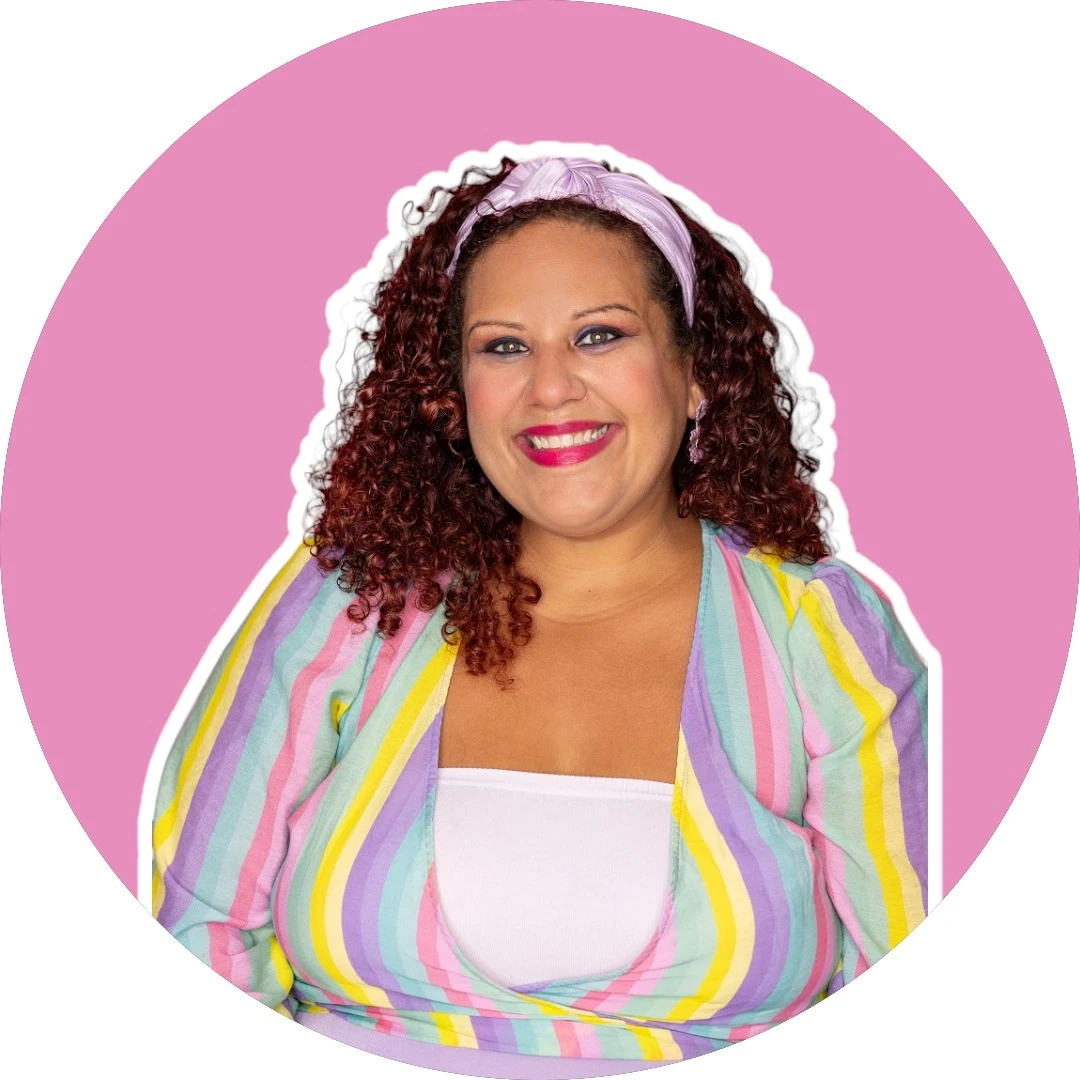Top 10 Midjourney alternatives to try right now


Midjourney is a special image generator. The tool is great at producing detailed, artistic, and photorealistic images and has a leading market share of 26.8%.
But the platform also has its shortcomings. It has a steep learning curve, heavy censorship, limited control, and an uncomfortable user interface — you can’t even use it outside Discord. It also has an unfriendly price point for a capped number of generations per month.
These limitations can make it challenging to use, especially if you're new to AI image creation or seeking a better way to produce high-quality images for your business or creative projects.
If you’ve been looking for a Midjourney alternative, you’re in the right place. There are several other AI image generators out there — way too many in fact, which makes picking the right one overwhelming. So, I’ve handpicked ten of the best Midjourney alternatives, chosen for their features, specific use cases, and how these stack up against Midjourney.
I compared every tool on this list with the same prompt below, to give you a visual sense of their output:
“A young African American woman with a warm expression wearing a floral headpiece and basil-colored blouse, natural warm soft light, side profile view, clean white background, fashion photography.”
Let’s get into it.
The top 10 alternatives to Midjourney at a glance
| Midjourney alternatives | Tool type | Best for | Key features | Pricing |
|---|---|---|---|---|
| Photoroom | Integrated into photo editing workflows | Beautiful product visuals | Text and image-to-image prompting, batch background image creation, team collaboration | Free; paid starts at $4.99/week |
| Adobe Firefly | Integrated into photo editing workflows | Adobe integrations | Copy-right free, Photoshop integration, Style reference | Free with credits; paid starts at $4.99/month |
| DALL-E 3 | Embedded in chatbots and search engines | Conversation-style prompting | Chat prompting, free commercial use, simple interface | Part of ChatGPT Plus ($20/month) |
| Imagine by Meta | Embedded in chatbots and search engines | Integration with Meta apps like WhatsApp | Chat prompting, Meta integration, animate creations | Free with watermarks |
| Image Creator | Embedded in chatbots and search engines | Microsoft integrations | Chat prompting, Microsoft integration | Free; uses a ‘boost’ system |
| Playground AI | Primarily focused on image generation | Social creation | Multiple models, Perplexity integration, style options | Free (capped); paid starts at $15/month |
| Stable Diffusion in DreamStudio | Primarily focused on image generation | Extensive customization | Large community for support, detailed customization | Free with credits; paid starts at $10/month |
| Ideogram | Primarily focused on image generation | Colorful graphics | Image-to-text, social prompting | Free (capped); paid starts at $7/month |
| Freepik Pikaso | Primarily focused on image generation | Sketching images to life | Sketch-to-image, creation support | Free with credits; paid starts at EUR 6/month |
| Craiyon | Primarily focused on image generation | Free image generation | Unlimited images, T-shirt print service | Free; paid starts at $6/month |
What makes a great Midjourney alternative?
What makes Midjourney great is that it actually creates images of high quality if you can withstand its downsides. So, for any image generator to be a legitimate Midjourney alternative, it has to match or exceed that bar of quality. On top of that, the tool needs to be able to produce the type of picture you want. This is where your goals and the tool’s customization features come in.
When choosing an alternative to Midjourney, consider these three main factors that influence the final result of using image generators:
1. Your specific goals
Having a clear purpose or use case makes it easier to choose an image generator, as different platforms cater to different needs. Whether you need detailed artwork, simple illustrations, or something tailored for marketing, understanding your goals will help you select the most suitable tool.
2. The tool’s performance
When evaluating alternatives, consider their ability to produce high-resolution, visually appealing images that meet your standards. Performance also includes how quickly the tool generates images and how well it handles complex prompts. The best AI image generators are excellent at these.
3. The level of control available
You might not be an artist, but you likely have expectations for how your images should look. To meet these expectations, you need a tool with good customization features. But here’s the key: each AI image generator offers its own level of control. To truly make the most of these tools, it’s essential to understand their category and how much control they offer.
Tools primarily focused on image generation (e.g., Stable Diffusion): These require creativity and well-crafted AI prompts, providing significant control over the images produced. They are perfect for experimentation and iteration.
Tools embedded in chatbots and search engines (e.g., DALL-E3): These enable image creation through conversation, where the AI takes on more control, which is great if you prefer less manual input.
Tools integrated into photo editing workflows (e.g., Photoroom): These blend AI generation with other editing tasks, making it easy to create and enhance images in a single platform. They require good prompting skills but assist you through the process.
💡 Additional considerations: It’s beneficial if the platform aligns with your budget, is easy to use, integrates smoothly with your existing workflow, offers community and support, and regularly updates its tool to improve results.
We’ll evaluate the paid and free alternatives on this list based on these criteria to help make your decision process easier.

📘 Also read: Image prompting: A beginner's guide to enhancing product photography
The top 10 Midjourney alternatives for AI image generation
Tools that integrate image generation into photo editing workflows
1. Photoroom: for beautiful product visuals
Rated 4.6/5 on Product Hunt and 4.7 in the Apple App Store.
Photoroom is a rare find when it comes to image generators designed for product photography. Business owners and creators use the photo editing platform to generate full photos, create background images, and enhance photos for the best quality. You can even batch create background images for multiple photos, which is great if you’re editing dozens of pictures.
 A picture generated by Photoroom using the test prompt above
A picture generated by Photoroom using the test prompt above
What makes Photoroom a good alternative to Midjourney?
Multiple generation tools: You can generate full images with AI Images and background photos with AI Backgrounds. The AI Images tool is only available to English-speaking users on iOS and the web and will roll out in other languages soon, plus Android.
Customization features: You can refine different aspects of your photo, like the type of picture, art styles, and photo size. You even get different prompting options, including assisted prompting for quick results, manual prompting for more control, and image-to-image prompting where you use existing images for visual inspiration. You can also use negative prompts to prevent unwanted elements.
Performance: The platform has a user-friendly interface, provides you with templates, and has a context-aware feature that automatically creates fitting backdrops based on your picture's content. These make it easy to generate professional images every single time.
Support: There's comprehensive documentation and tutorials to guide you. There’s also an active Facebook community of over 32k members where Photoroom users share photo creation tips, editing advice, and design hacks.
Team collaboration: Photoroom has a collaboration feature that makes it easy to share projects, give feedback, and create consistent visuals with your team—all within one platform.
Additional image editing tools: After creating your picture or changing your background image, you can upscale it to a higher resolution, remove unwanted objects, add realistic shadows, blur the background, expand your background, resize it for different platforms, and use other impressive AI-powered features for so much more.
Best use cases: Creating backgrounds to sell vintage clothing, creative social media posts, product images for e-commerce, custom prints for merchandise, visuals for marketing campaigns, and more. It's the perfect tool for generating professional visuals, collaborating with your team, and enhancing your AI photo in a single platform.
Accessibility: Mobile (iOS, Android) and Web.
Photoroom pricing: A forever free plan for tasks like background removal. A popular pro plan that gives you unrestricted access to the AI image generation tools (costs $4.99/week, $12.99/month, or $89.99/year with a free trial). You can share one Photoroom Pro subscription with two team members for free. Or contact the Sales team to learn more about processing a bigger amount of images.
I created the picture above with the AI Images tool. Here’s a generated image I made using the AI Backgrounds tool:

“What always fascinates me is no matter what orientation I take the picture in, the Photoroom app sort of picks it up so that my art is not floating in the air or in some awkward position,” says Chai, the founder of Chai Creations. It's like if I stack my cups or if they're taken lying on the ground, the app can somehow make it make sense, as if I brought the piece to the actual place to take the photos. It makes the presentation of my pieces more professional and saves me a lot of time.”
📘 Don’t miss: How to add a background to a photo online
2. Adobe Firefly: for Adobe integration
Rated 4.6/5 on G2.
Adobe Firefly is a web-based generative AI tool integrated within Adobe Creative Cloud, which gives you access to AI features across popular Adobe applications like Photoshop and Illustrator. It’s trained on copyright-free and licensed content, making the generated images safe for commercial use.
 A picture generated by Adobe Firefly using the test prompt above
A picture generated by Adobe Firefly using the test prompt above
What makes Adobe Firefly a good substitute for Midjourney?
Customization features: It's a text-to-image tool and you can adjust elements like aspect ratio, content type, and depth of field. You can also tweak the layouts and art styles using the Structure Reference and Style Reference features.
Performance: Adobe Firefly is easy to use, and the results are often consistent. But you’ll need to tweak some parameters to get something great.
Adobe integration: You can transition between different workflow stages by leveraging Firefly’s integration with Photoshop, Illustrator, and other Adobe products.
Commercial use: The platform allows you to use AI-generated outputs for commercial purposes if they don’t have a "beta" label. According to Adobe, you can still use outputs from beta features commercially, but they're not covered by legal protections.
Best use cases: Craft unique artwork or design branding visuals. You can quickly create images for marketing campaigns, tweak them with Firefly's advanced tools, and then integrate them into your creative workflow in Adobe.
Accessibility: Web on a stand-alone website. Adobe Firefly is fully integrated with Adobe’s suite.
Adobe Firefly pricing: Free with 25 monthly generative credits, but the images come with watermarks. Premium plan goes for $4.99/month and provides 100 credits. After using up your credits, you can still generate images twice daily until your credits reset.
Tools embedded into chatbots and search
3. DALL-E 3: for conversation-style prompting
Rated 4.3/5 on Product Hunt (DALL-E overall)
DALL-E 3 is OpenAI's advanced AI art generator, an upgraded version of DALL-E 2 integrated directly into ChatGPT-4. The platform allows you to use conversational text prompts to generate and tweak images, which makes it incredibly easy to use. DALL-E 3 images often look more animated than photographic. So, it’s not the best choice if you want hyper-realistic photos.
 A picture generated by DALL-E 3 using the test prompt above
A picture generated by DALL-E 3 using the test prompt above
What makes DALL-E 3 a good substitute for Midjourney?
Chat-style promoting: You get to make and adjust requests using conversational-style prompts, then edit the picture with the Brush Select feature that appears when you click on the image.
Performance: This is one of the simplest AI art generators out there, and it produces high-quality, artistically nuanced images with excellent detail and texture.
Open use: You can use your DALL-E 3 images freely. OpenAI says, “The images you create with DALL·E 3 are yours to use and you don't need our permission to reprint, sell, or merchandise them.”
Best use cases: Create digital art pieces, illustrations for marketing campaigns, concept art for creative projects, architectural renderings, social media visuals, and artwork for publications. You can even use DALL-E to visualize data or complex scientific ideas.
Accessibility: Mobile and web, via ChatGPT.
DALL-E 3 pricing: DALL-E 3 is part of ChatGPT Plus ($20/month) and Team ($25/person/month).
4. Imagine by Meta AI: For Meta integration
No extensive user rating for this new tool.
Imagine by Meta AI brings image generation to all apps by Meta, the company that owns Facebook, Instagram, and WhatsApp. The free AI image generator does a decent job generating images, though it fumbles with details like eyes and fingers. To get the best results with Imagine, provide details in your prompt and ask follow-up questions.
 A picture generated by Meta AI using the test prompt above
A picture generated by Meta AI using the test prompt above
What makes Meta AI a good alternative to Midjourney?
Chat-style promoting: Chat with the AI and tweak requests as you go. This conversational-style prompting is the norm across Meta’s platforms.
Customization: It doesn’t have regular customization features like other AI generators. But you can modify images based on the text prompt you use.
Performance: You get a simple interface, real-time image creation (on WhatsApp), and four photo results.
Animated GIF: An “Animate” feature that lets you turn your creation into a GIF, which is a great content type for social media.
Best use cases: Create animated custom GIFs, album artwork, decor inspiration for your apartment, social media visuals, and more.
Accessibility: Mobile and Web across Meta’s platforms. The tool also has a stand-alone website.
Meta AI pricing: Completely free, with watermarked images.
Here’s the same picture from above in an animated GIF format:

5. Image Creator from Designer: for Microsoft integration
Rated 4.3/5 on G2
Image Creator from Designer, previously called Bing Image Creator, is a free AI image generator for making animated AI images. It's Microsoft's own AI image generator and has a few things in common with ChatGPT: It is powered by DALL-E 3, works with a conversational prompting style, and gets you pretty similar results. But unlike DALL-E 3 in ChatGPT, Image Creator is free and accessible through multiple mediums.
 A picture generated by Image Creator using the test prompt above
A picture generated by Image Creator using the test prompt above
What makes Image Creator a good replacement for Midjourney?
Customization features: You can generate four images per prompt with the option to refine results through conversational prompts in Copilot.
Performance: The AI art generator creates high-quality, animated-looking images similar to those by DALL-E 3 in ChatGPT.
Microsoft integration: It’s easy to handle image generation and AI-powered text tasks in this unified platform that integrates with Microsoft’s ecosystem.
Best use cases: Get inspiration for your art and make digital illustrations, concept designs, blog visuals, and creative social media content.
Accessibility: Web—through the tool's website, Copilot (formerly Bing Chat), or a web browser like Microsoft Edge.
Image Creator pricing: Free to use, but it uses a ‘boost’ system for image generation, and you only get 25 boosts when you sign up and 15 boosts weekly. Boosts are like credits; you use one boost for each entry you make. You can still create when you’re out of boosts, but you’ll wait longer to generate images.
Tools with a primary focus on image generation
6. Playground AI: for social image creation
Rated 4.6/5 on Product Hunt
Playground AI brings an interesting collection of features, inviting you to play as you create. It has a Mixed Image Editing function that allows you to combine real and AI-generated images to make unique images. It also has a social feature with an Explore tab where you can see and engage with other creators in the Playground art community. Likewise, other users can see your profile and engage with your creations. You can only turn off this feature on the paid plan.
 A picture generated by Playground AI using the test prompt above
A picture generated by Playground AI using the test prompt above
What makes Playground AI a good substitute for Midjourney?
Multiple models: You get three image generation models, including Stable Diffusion XL, Playground v2.5, and Playground v3 (beta). Each AI model generates photos with different levels of realism.
Customization features: You can switch between style options, enter high complex prompts, automatically expand short prompts, use negative prompts to exclude unwanted elements, use reference images for inspiration, and train custom models for specific tasks.
Performance: The interface is clean and intuitive, though it takes a minute to navigate if you’re new to creating images with AI. It also has a canvas that displays generations with each model and you can count on it to generate high-quality images.
Censorship: Playground has a safety filter that you can’t turn off. But you can reduce its impact by using negative prompts.
Integration: You can use the tool directly in Perplexity, the popular AI search engine.
Best use cases: Create portrait photos, memes, photo montages, abstract art, cover art, animated characters, and ideas for watercolor painting, and other creative tasks. Improve rough sketches using the image-to-image feature.
Accessibility: Web (primary platform) and mobile (new iOS app).
Playground AI pricing: Free with limited features (50 images/day and no watermarks). Pro plan ($15/month for 1000 images/day). Turbo plan ($45/month for 2000 images/day).
7. Stable diffusion in DreamStudio: for extensive customization
Rated 4.6/5 on Product Hunt
No image generator beats the level of customization you get with Stable Diffusion (SD), the image model by Stability AI. It’s an open-source model that can run on your computer or train models with your dataset. This flexibility often results in quality images but also requires better prompting and more technical skills than Midjourney.
This user on Reddit said it best: The thing about Stable Diffusion is that in order to get the best results you have to put in work to fine-tune your processes, which means deciding what sampler to use with how many steps, weighting certain keywords in the prompt, building a negative prompt of things you don’t want, using specific upscalers, etc. If you are a control freak, SD is a lot more comprehensive.
To solve the complexity problem, Stability AI created DreamStudio, making the model more accessible.
 A picture generated by DreamStudio using the test prompt above
A picture generated by DreamStudio using the test prompt above
What makes DreamStudio a good substitute for Midjourney?
Customization: You can choose your AI art type to create unique styles, select the number of generation steps to use, pick the number of images you want the AI to create, enter a negative prompt to avoid things you don’t want it to include, upload a photo from your device to inspire the AI, and change the picture's ratio.
Performance: DreamStudio is easy to use, often creates visually pleasing images, and is a great way to explore Stable Diffusion without technical skills.
Community and support: Stable Diffusion has an official Discord community with over 345k members and a Reddit community with over 540k members and vast tutorials, resources, and documentation.
Simple editing: After generating images, you can erase parts of the picture and upscale it to a higher resolution.
Best use cases: Create customized avatars, social media visuals, illustrations, media and marketing materials, realistic portraits, and so much more. If you’d like to build an app or set up your model, get Stable Diffusion models on your computer if it’s compatible.
Accessibility: Web (primary platform) and Windows (for the SD model)
DreamStudio pricing: Free with 25 generative credits. Payment plan of $10 for 1,000 credits (gives 5,000 images). Complicated customization and higher image resolutions require using more credits. For the free option, although DreamStudio’s pricing page states that “new users receive 100 free credits,” I only got 25 credits after creating an account.
8. Ideogram: for colorful graphics
No extensive user rating for the new platform.
When you visit Ideogram, you’re immediately greeted by a colorful animation that pretty much sums up its value: creative graphic materials. The platform creates quality images in different styles but excels at making text-based images like logos. Like Playground AI, it has a social feature with an Explore tab and a like button. Your generated image will be public by default on the free version.
 An illustration generated by Ideogram using the test prompt above
An illustration generated by Ideogram using the test prompt above
What makes Ideogram a good substitute for Midjourney?
Image-to-text feature: This feature comes in handy for prompting. You can upload a picture and ask the AI to describe it, then use the text it creates as a prompt for making a new image.
Customization: You can choose specific aspect ratios, image styles, and the Magic Prompt option to improve your initial prompt.
Performance: The interface is intuitive and user-friendly, making it easy to use. The generated image quality is impressive, but you’ll have to wait for about 30 seconds for the tool to generate your image on the free option, which is slower than most AI tools.
Social prompting: You can remix other users’ images by clicking on an image in the Explore page to view the prompt, editing it with your own words, and adjusting the elements to create a personalized version of the image.
Best use cases: Create logo designs, posters, T-shirt designs, illustrations, 3D renderings, and more.
Accessibility: Web.
Ideogram pricing: Free for 10 slow prompts/day. Basic plan is $7/month (400 priority prompts/month and 100 slow prompts/day). Plus plan is $16/month (1,000 priority prompts/month and limited slow prompts). Pro plan is $48/month (3,000 priority prompts/month and unlimited slow prompts).
9. Freepik Pikaso: for sketching images to life
Rated 4.7/5 on G2 (Freepik overall)
If you've ever searched for stock photos online, chances are you've encountered Freepik, a platform with a vast array of high-quality stock images. Freepik Pikaso is its collection of image generation features, which includes a sketch-to-image tool that sets it apart from other AI image generators. To use this tool, you draw what you want on one canvas and watch it translate your doodle into an image on a second canvas. It’s such a playful experience.
 A picture generated by Freepik Pikaso using the test prompt above
A picture generated by Freepik Pikaso using the test prompt above
What makes Freepik Pikaso a good alternative to Midjourney?
Multiple generative tools: It has the popular Sketch-to-image feature and a regular AI image generator with multiple AI model options.
Customization: You can enter detailed prompts, include a negative prompt, select image styles, and adjust colors and lighting. There’s also an Imagination slider in the Sketch-to-image feature that you can use to refine your results. The more you increase the slider’s value, the more realistic your result. But doing so also consumes more credits and can make your final image different from your sketch.
Performance: It’s one of the most user-friendly platforms I’ve explored, with intuitive canvases and clear labels of its features. It’s also fast and generates stunning images.
Creation support: You don’t need great drawing skills for good results. You can add text prompts, drag and drop emoji-like icons onto your sketch, use the Screen feature in the Sketch-to-image tool, or upload photos from your camera to direct the tool.
More editing tools: There’s an Upscale tool and a Quick Enhance feature that improves picture quality. There’s also a background remover and other editing advanced features.
Best use cases: Create oil painting, e-learning assets, detailed illustrations from simple sketches, custom images for marketing campaigns, visuals for social media posts, personalized artwork for blogs or websites, and even product concepts.
Accessibility: Web (primary platform) and mobile.
Freepik Pikaso pricing: Free with 20 credits/month for the AI image generator and 200 credits/month for the Sketch-to-image feature. Essential plan costs EUR 6/month for 7,000 credits/month. Premium plan costs EUR 15/month for 15,000 credits/month. Premium+ plan costs EUR 34/month for 45,000 credits/month. Although Freepik’s pricing page states that credits reset monthly, I noticed that the credits on my account reset daily.
Here’s what I got with the sketch-to-image tool in Freepik Pikaso. I made a basic sketch and was aiming for a ball. But the tool perceived it as jewellery/wreath. To be fair, I only drew an oval shape.

10. Craiyon: generate images for free
Rated 4.5/5 on Product Hunt
Craiyon was previously called DALL·E Mini (no relation to OpenAI’s DALL-E 3), and it's the best free alternative to Midjourney. Its upside is that it’s simple and has a free option with no credit limits. But there are some tradeoffs: the free version comes with ads and generates fair images at best. Regardless, the tool is a good starting point for generating free images based on simple text prompts.
 An art picture generated by the free tier of Craiyon using the test prompt above
An art picture generated by the free tier of Craiyon using the test prompt above
What makes Craiyon a good substitute for Midjourney?
Customization: You can enter negative prompts, choose between image styles, and influence color and lighting in the AI-generated image.
Performance: The tool has a user friendly interface that makes it easy to use. It also generates photos of good quality with the pro version. The public version doesn’t deliver on quality and is slower at generating images, requiring a 60-second wait time for free users.
Unlimited images: You can create unlimited images, even with the free version.
T-shirt print service: You can buy a printed T-shirt with your creation.
Best use cases: Create wall art, trade show displays, social media posts, T-shirt designs, posters, book covers, and more.
Accessibility: Web.
Craiyon pricing: All plans offer unlimited generations. Free with ads (60 seconds to generate one image). Supporter plan costs $6/month (45 seconds for 9 images). Professional plan costs $24/month (15 seconds for 9 images). Custom pricing plan for Enterprise.
Get creative with the best Midjourney alternative
You’ve now seen a variety of the best Midjourney alternatives, each with its features and best use cases. You can experiment with them all, but remember that the best tool for you depends on your needs.
So, if you want something similar to Midjourney with more focus on customization, Stable Diffusion will work well for you. If you’re new to the game and want to see how AI images are made without going deep, start with Meta’s Imagine. If you want an image generator that blends with your product photography workflow, go with Photoroom (Web, iPhone, or Android) and collaborate with your team throughout your process.
Seriously, every platform on this list has its edge—that’s why they’re on the list. Whatever tool you choose, play around with its features to get creative and see ways you can get the best from it.
Midjourney alternatives FAQs
What is the best AI image avatar generator?
The best AI avatar generator depends on your specific needs. You can use Synthesia for lifelike AI avatars that speak in videos, Lensa to turn your photos into avatars, or Ready Player Me to make avatars for virtual worlds and the metaverse.
Which AI platforms can I train with my images?
Google Cloud AutoML and Microsoft Azure Custom Vision allow you to upload your images, train AI models, and tailor AI behavior to recognize or interpret these images. They are suitable for beginners and experienced users who want to create custom models.
What is the meaning of copyright in AI-generated images?
Copyright in an AI-generated image is a complex issue. AI technology often use existing online art to learn and create new images, which can lead to legal and ethical concerns. While you technically own the copyright of the image created by AI, the legal framework around this is still unclear and varies by country. Since the technology is new and global regulations lag behind, consult a professional before using these images commercially to ensure compliance with copyright laws.
Related reading
















